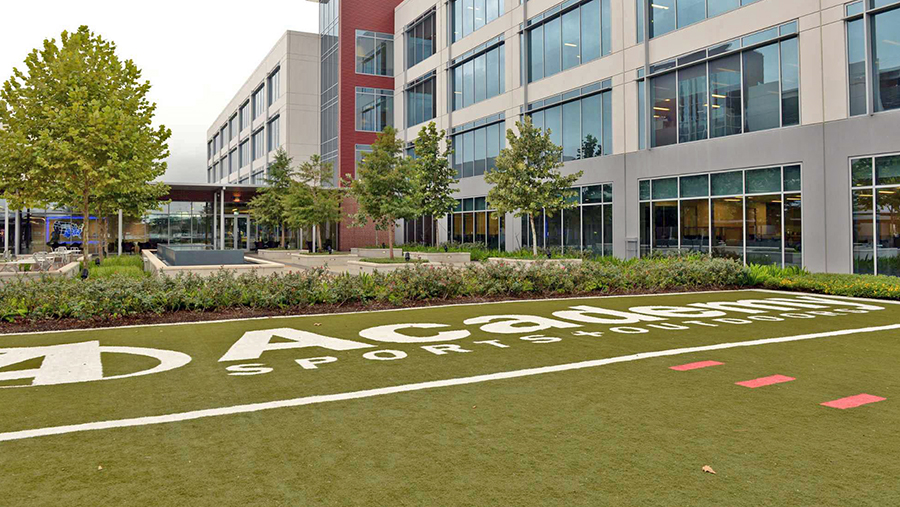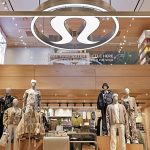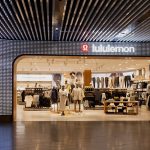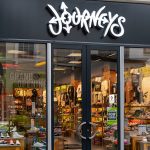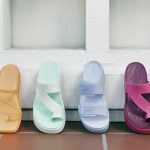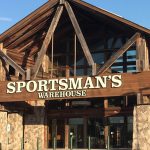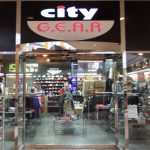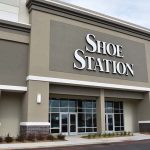Academy Sports reported first-quarter results that missed analyst estimates and widened its full-year guidance due to potential inflationary pressures arriving this year. However, Academy officials on an analyst call also shared many positive developments, including a healthy response to Nike product expansion and Jordan brand launch.
“Our Jordan brand launch and Nike expansion plans are just starting to bear fruit and should provide a tailwind the remainder of the year,” said Steve Lawrence, CEO, on the analyst conference call.
Other positives included comps turning positive in April which particularly benefited from the Nike expansion and Jordan launch as well as to a lesser degree the shift of Easter from March in 2024 to April in 2025. Academy also maintained the high end of its sales guidance range for the year and laid out a number of tariff-mitigation steps that allowed the retailer to maintain its expectations for gross margin for 2025.
As a result, Academy’s shares closed Tuesday up 23 cents to $44.60 on the New York Stock Exchange despite the quarter’s miss.
Lawrence further noted that Academy is finding continued success attracting higher-income consumers to help offset some cautious spending by its core lower-income consumer. He said, “This is a pattern we’ve seen emerge over the past couple of quarters, and it is starting to accelerate. We would expect this trend to continue as customers look to stretch their discretionary spending power by seeking out value.”
Progress was also cited across a number of strategic initiatives, including improving performances at recently-opened stores, double-digit e-commerce growth, the roll out of RFID chips to improve in-store stocks, and a good response to a new “Fun Can’t Lose” marketing campaign.
“While we’re excited about the progress we’re making against our long-term initiatives and the momentum we’re starting to see in the business, we’re also sober about the fragile state of the U.S. consumer and the inflationary pressures it could face as the year progresses,” said Lawrence in announcing plans to widen its range of comp sales guidance for the year.
Lawrence stressed that Academy would focus on maintaining the retailer’s strong value positioning and seek to gain market share. He said, “We know that when discretionary spending is under pressure, customers look to maximize their spending power by seeking out value, and we plan to capitalize on this and capture market share by continuing to provide the best value for the sports and outdoor space.”
First-Quarter Results Miss Analyst Targets
In the quarter ended May 3, sales slid 0.9 percent to $1.35 billion, missing Wall Street’s consensus target of $1.37 billion. Earnings on an adjusted basis fell 36.8 percent to $51.6 million, or 76 cents share, falling short of analysts’ consensus target of 89 cents.
Comps declined 3.7 percent in the quarter. Lawrence noted that February sales were soft, primarily driven by cold temperatures and winter storms across Academy’s footprint. Sales improved sequentially in March and then turned positive in April. Lawrence believes April’s rebound particularly benefited from the expansion of Nike product and the arrival of Jordan brand on April 23.
Gross margins improved 60 basis points to 34.0 percent, driven by 40 basis points of merchandise margin expansion and 10 basis points of favorable shrink. The merchandise margin was impacted by a greater mix of soft goods while the shrink improvement reflects efforts to improve inventory accuracy, including the rollout of RFID-tracking chips on some brands.
SG&A increased 290 basis points to 28.8 percent, primarily driven by growth initiatives for support new store openings, in-store layout changes to support the Jordan brand launch and the expansion of Nike product, and investments in digital and supply chain technology. Academy invested over $7 million into the Jordan brand launch and Nike expansion that included resetting half of the stores in its fleet.
Operating income fell 32.3 percent to $69.3 million. On a reported basis, including non-cash charges related to equity-based compensation, net income fell 39.7 percent to $46.1 million, or 68 cents a share.
Category Performance
Among categories, Footwear and Apparel were the two strongest businesses for the quarter, running roughly flat to last year with Sports & Recreation closely following. Lawrence said, “All three of these businesses started to accelerate once we got past the cold weather in February, with warmer temperatures in March and April. Nike was a key sales driver across all three areas, and as you’d expect, was one of our best performing brands for the quarter.”
Carl Ford, EVP and CFO, said in soft goods categories, strength was seen in kids’ apparel, women’s athletic apparel and men’s athletic footwear. Athletic footwear banged out a positive 4.5 percent comp, led Nike and Brooks. Jordan products were only in stores for the last two weeks of the quarter, but the brand beat Academy’s internal plan in April and in May.
In Sports & Recreation, outdoor cooking and baseball posted positive comps as spring weather arrived. Overall, team sports underperformed, primarily coming from softness in basketball and a slower start in golf that was attributed to cooler weather earlier in the quarter.
Outdoor was down low-single digits, primarily driven by softer sales in ammo. Fishing, firearms and coolers and drinkware were all posted solid increases for the quarter while ammunition, paddle and power marine remain challenged. Ford said Academy continues to de-emphasize the marine categories to emphasize more productive additions like Jordan brand. Absent ammunition, paddle and power marine, “outdoor is performing very well, and in fact, would have posted a positive comp,” said Ford.
Progress on Strategic Initiatives
Lawrence highlighted progress being made on strategic initiatives during the quarter, including seeing stores opened during 2022 and 2023 show low-single digit comp growth in the period. He said Academy continues to apply learnings from past openings to newer ones and its 2024 stores, which are not yet in its comp base, are “off to a great start, and we expect them to be strong contributors.”
Academy is on track to open 20 to 25 stores this year, up from 17 last year. Lawrence said Academy has “thoughtfully slowed the pace of signing deals the 2026 new stores,” given the potential changes to construction costs as a result of tariffs. Lawrence said he doesn’t expect to see a change in Academy’s expansion plans but noted that some stores may open in the second or third quarter in 2026 that would have opened in the first quarter. Said Lawrence, “Our goal is to maintain maximum flexibility as we navigate a rapidly changing landscape.”
Last year, Academy announced plans to open 160 to 180 stores in the next five years with the potential to reach over 800 in the U.S. In the first quarter, Academy opened five stores, bringing its total to 303 while expanding into two new states, Pennsylvania and Maryland.
Academy also continue to see accelerated growth in e-commerce, which grew 10 percent to expand its penetration by about 100 basis points to over 10 percent. Said Lawrence, “Our focus remains on delivering a streamlined experience on our site that is intuitive and inspiring. A lot of the work completed in Q1 was around streamlining and improving the internal search functionality of our site. At the same time, we’ve also been pushing hard to grow our endless aisle offering with an expanded assortment online supported for dropship. The team has been making solid headway on both fronts, and you can see it reflected in improvements in both conversion rate and average order value during the quarter.”
Another priority for Academy is to improve the productivity of existing stores and that’s being supported by the introduction of new brands, including the introduction of Jordan on April 23 to 145 doors and online.
Lawrence said this was the first time that Academy cross merchandised apparel, footwear and accessories together by gender into a branded shop concept in the Jordan launch. He said the Jordan brand offering at Academy is focused on sports products at accessible price points. As an example, he said Academy carries the Luka 77, which sells for $99 and can be worn to play basketball but also works as a casual shoe. He said of Jordan, “While it’s still early days, the initial reaction with the customers was strong and the brand is tracking ahead of initial sales plans. Our goal is to expand to key items such as cleats for football season into all doors later this summer and we anticipate the Jordan Brand will be a top 20 brand for us by the end of the year.”
In-store productivity is also being enhanced be newer technologies, including the rolling out of RFID scanners to all doors. RFID chips inside brands such as Nike, Jordan and Adidas enable Academy to update store inventories on a weekly basis. Said Lawrence, “We piloted this technology in 70 stores last year. It led to a 20 percent improvement in store-level inventory accuracy. Rolling this technology to all stores will help improve our in-stocks, which ultimately will lead to increases in conversion.”
Levi’s, Under Armor, Columbia, Brooks and Puma will be added to RFID tracking during 2025. Said the CEO, “Looking into next year, our goal is to embed RFID tags in most of our private label products, along with working with other national brand suppliers to follow suit where it makes sense.”
Academy is also introducing handheld devices which have POS functionality integrated them. The handhelds will let associates search for items out-of-stock in the store and either ship it to the customer or allow the customer to pick it up at another store. Lawrence said that stores using the technology was seeing their “save the sale” revenue increase on average by 900 percent.
Finally, a focus for Academy is improving its marketing via regions. In April, Academy launched a campaign with a new tagline, “Fun Can’t Lose,” that Academy believes is resonating with customers. Lawrence said, “It serves a dual purpose in both driving top of mind brand awareness while also reinforcing our strong value messaging.”
Academy is increasing its advertising spend by 10 basis points this year to 2.7 percent of sales to support the campaign as well as spotlight the Jordan brand introduction and new store rollouts. Also, as part of the marketing push, Academy is planning to add two million customers to its My Academy Rewards loyalty program in 2025 to reach over 13 million members by year end. Lawrence said rewards members shop Academy two to three times more in a year than an average customer and spend four to five times more on an annual basis.
Tariff Update
As part of its move to mitigation the impact from tariffs, Academy first paused shipments out of China during the period that the tariff rate was set at 145 percent. Once the rate was lowered to 30 percent, shipments were selectively resumed.
Secondly, Academy accelerated its efforts to reduce its exposure to China production, shifting to alternative countries of origin, like Cambodia and Bangladesh. As a result of past efforts, 9 percent of Academy’s private brands were sourced from China at the start of the year and that’s expected to be reduced to 6 percent by year end, ahead of Academy’s original goal of 8 percent. Academy has also worked with factories and overseas suppliers to reduce costs.
Third, Academy leveraged its healthy balance sheet to pull-forward $85 million in domestic inventory on “evergreen product,” such as products such as bicycles or free weights which have no seasonal or obsolescence risk, to take advantage of pre-tariff prices. As a result, inventories are up 6.5 percent at the quarter’s end with dollars per store up 7.8 percent. Said Ford, “We anticipate our inventory levels will normalize as we move through the year.”
At the same time, Academy reduced over $120 million in inventory receipts to maintain maximum flexibility to respond to evolving landscapes while similarly reducing its planned capital expenditures for the year.
Fourth, Academy utilized its pricing optimization engine to look for opportunities to offset cost increases for strategic pricing and promotional adjustments. Lawrence added, “As we work through these changes, our focus was to ensure that the impact on the customer was minimal while also protecting our position as the value leader in our space.”
Finally, Academy continues to work with each of its branded partners on a case-by-case basis to develop offset strategies with each supplier facing different exposure to tariffs. Said Lawrence, “At this point, we believe we’ve effectively mitigated cost of tariffs at the current levels while minimizing the impact on our customers.
Dick’s/Foot Locker Comments
Academy officials in the Q&A session were also asked about how pending Dick’s Sporting Goods pending acquisition of Foot Locker might affect competitive dynamics in the space. Lawrence remarked, “Dick’s is a great company. They’re great competitors of ours.”
However, he noted that Academy has different opportunities, including the success its finding with customers trading down as well as the expansion opportunities with stores and online. He further noted that Academy is “pretty different than a lot of our competition” with a fuller merchandise offering and different customer. Lawrence said, “We have a big outdoor business that really resonates with our consumer. We also, I think, attract a slightly different customer, a younger family that’s really kind of starting out their journey through sport. And so, we’re going to focus on serving our customer and executing our strategy.”
Outlook
For the year, Academy now expects:
- Sales in the range of $5.97 billion and $6.27 billion versus previous guidance in the range of $6.09 billion and $6.27 billion;
- Comps in the range of negative 4.0 percent to positive 1 percent versus previous guidance in the range of negative 2.0 percent and positive 1.0 percent.
- Gross margins to continue to be in the range of 34.0 percent to 34.5 percent of net sales;
- GAAP EPS in the range of $5.10 and $5.90 per share versus $5.40 to $5.85 per share previously;
- Adjusted EPS in the range of $5.45 to $6.25 per share, compared to $5.75 to $6.20 per share previously;
- Capital expenditures in the range of $180 million to $220 million against previous guidance in the range of $220 million to $250 million;
- Adjusted free cash flow in the range of $250 million to $320 million against previous guidance in the range of $290 million and $320 million.
Image courtesy Academy Sports and Outdoors, Inc.

